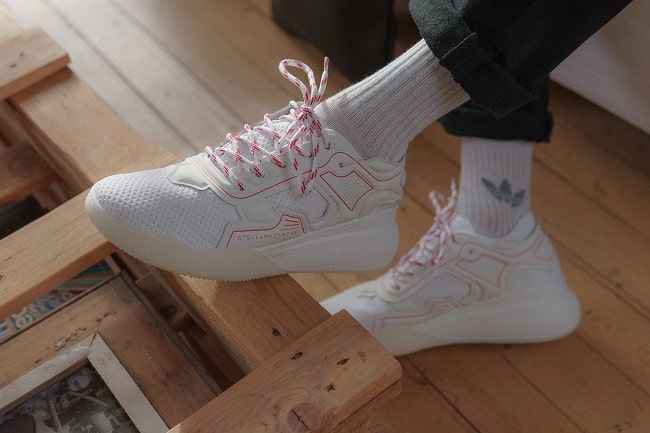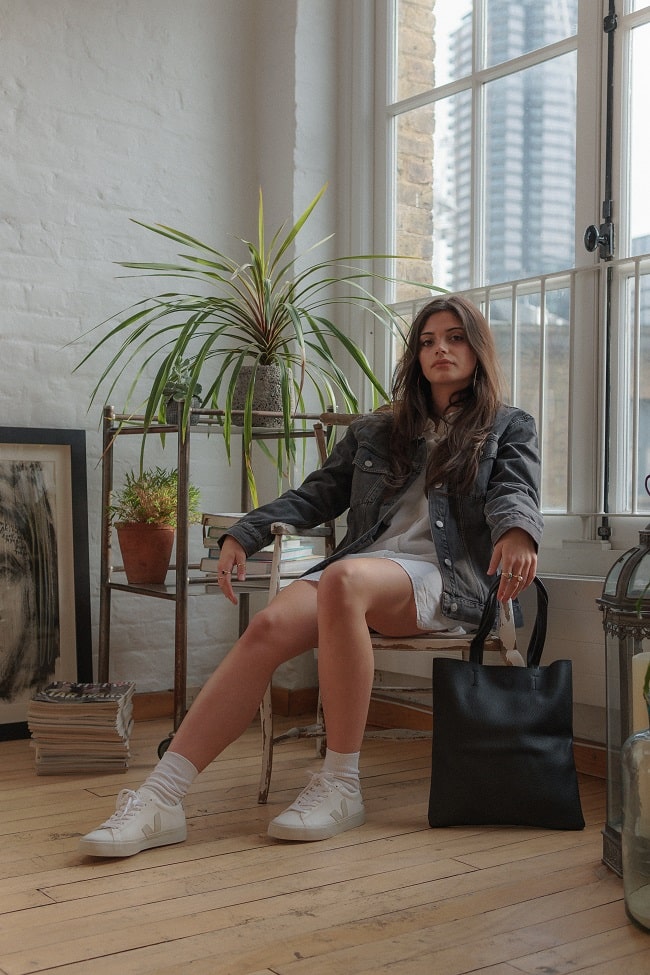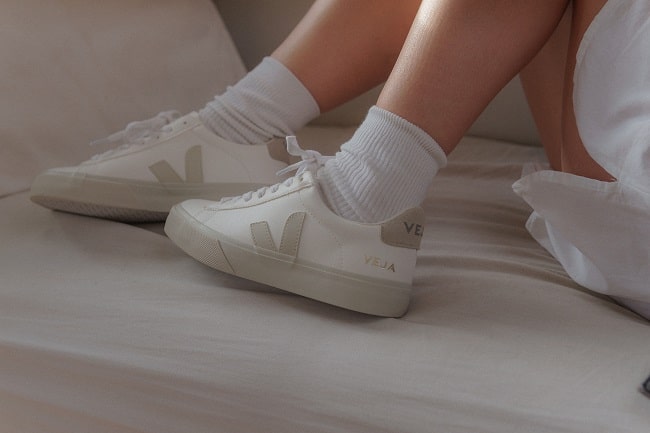1
HOME > Trends >
THE SUSTAINABLE SNEAKERS BUYING GUIDE
Written by George Sullivan in Trends on the 29th October 2019

We all love that feeling of putting on a pair of fresh new creps for the first time, but have you ever considered the environmental impact of your favourite sneakers? From materials to manufacturing, many have hidden costs. But is it possible to find shoes that don’t (literally) cost the Earth? In the run up to World Vegan Day, take a look at The Sole Supplier’s sustainable sneakers buying guide and get inspired.
What makes sneakers unsustainable?
Sneakers have a high carbon footprint as they typically have many parts which, involve injection molding, foaming, heating, cutting and sewing. Although there isn’t a lot of research out there on the environmental impact of fashion, one study found manufacturing a single pair of running shoes emits 13kg of carbon dioxide. Most of the world’s sneakers come from China’s factories too, which still rely mainly on fossil fuels which is bad for the planet. In 2016 China represented nearly 80 percent of the global footwear manufacturing market alone.

Which brands out there are trying to change things and shake up the system?
Sustainable and vegan footwear has had a bit of rep for being a bit, well, rubbish (pun intended) in the past. But the movement has come a long way since then. Sneaker brands making us want to think with our feet:
Adidas
Adidas got on board in 2017, collaborating with environmental initiative Parley for the Oceans. It re-released its EQT sneaker using up-cycled plastic waste collected from Maldives’ beaches.
Rombaut
Italian brand Rombaut’s core mission is to protect the Earth’s biodiversity. All materials and fabrics are sustainably engineered from plant-based materials, using stone, tree bark, natural rubber, cotton cellulose and coconut fibre.
Nike
The Nike Plant Color Collection has just been announced as the Summer 2019 capsule collection. It’s "inspired by alternative ways to make colour," using plant-based dyes. The Air Max 95 and Blazer Low will be the first recipients to undergo this eco-makeover.

Veja
Veja is the ‘eco-it’ shoe brand of the moment after the Duchess of Sussex was spotted copping a pair. By combining a winning formula of simple, yet stylish designs, millennial marketing and a sustainable focus, the brand has tapped into today’s modern consumer. The plain white V-10 Low Top with coloured Vs are the next modern classics on every savvy sneakerhead’s wishlist. Veja's retro-influenced white vegan-leather Campo trainers blend the sleek silhouettes of its original models to form a smart-yet-sporty shoe. The side logo appliqué is made from wild-sourced Amazonian rainforest rubber.
Stella McCartney
Stella McCartney has been at the forefront of ethical and sustainable fashion way before it hit the masses. Her Loop Sneakers are stitched together without glue for an innovative shoe that can be completely dismantled and recycled.
Reebok
The Cotton + Corn is an initiative Reebok has been working on with partners like Dupont Tate & Lyle for several years. These sneakers are made from a 100 percent cotton upper and a bio-based corn sole. According to Reebok, the NPC UK Cotton + Corn is the first ever 75 percent USDA-certified bio-based shoe, so you can feel good about what you’re wearing.

How else you can make a difference
1. Hang onto your sneakers for as long as you can: Try investing in more ‘classic’ looks, rather than just the latest ‘fads’, as these are the pairs that will really stand the test of time.
2. Take care: Take better care of your shoes in the first place, by gently washing them and polishing them until they are no longer wearable.
3. Have some good quality sneakers you’re not wearing? Take them to your nearest op shop or donate to Shoes for Planet Earth.

4. Have some really worn sneakers? Nike recycles any sneakers with their Reuse-A-Shoe programme. It turns them into ‘Nike Grind’, which is used to create courts, tracks, playgrounds and fields.
5. Check the source: Sustainable brands are not just about environmentally friendly materials. They should also be transparent about the people who contribute to its supply chain. The most sustainable brands are B Corp certified. This is a certification awarded to companies that meet certain standards of social and environmental purpose. Check brand websites for more details.
6. Look for alternative materials: With leather alternatives look for chrome-free leather, vegetable tanned leather or alternatives like Piñatex (made from pineapple leaves), recycled PET or textiles including hemp, organic cotton or wool. With rubber alternatives look for natural or wild rubber. This is cultivated to prevent deforestation.
Trending
2
3
4
5
6
7
8
9
10









